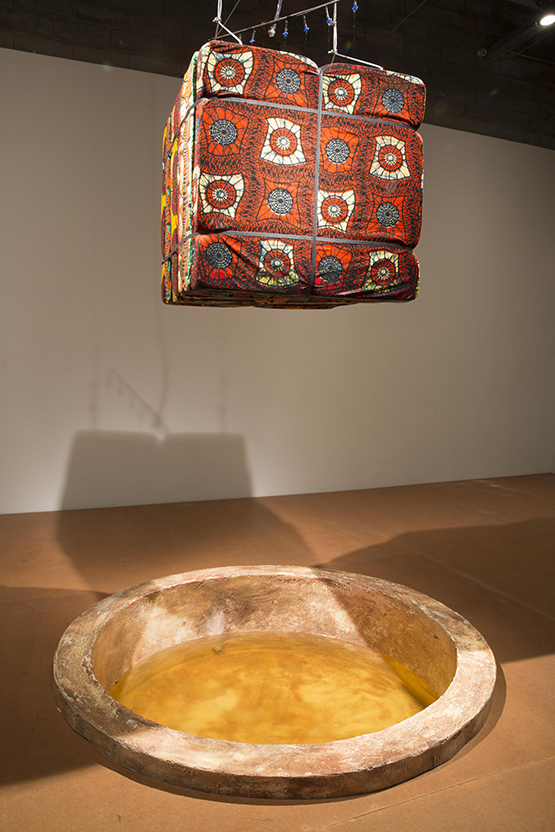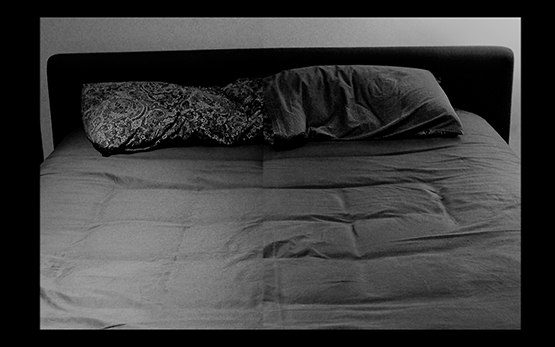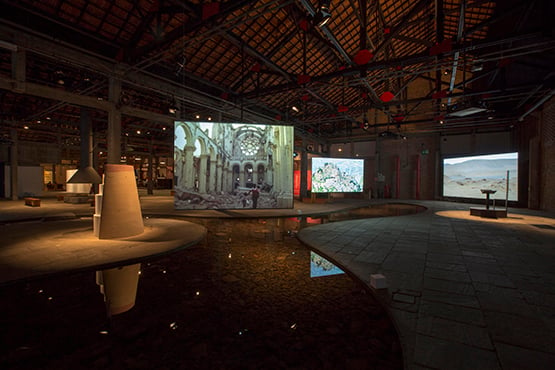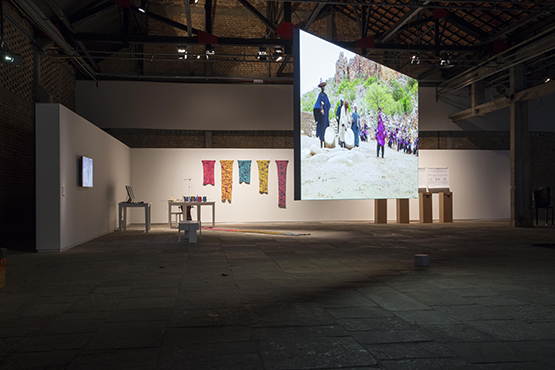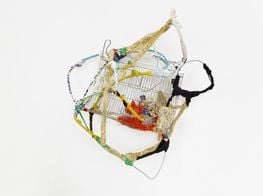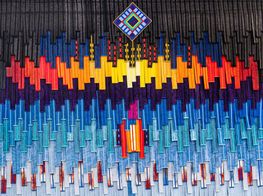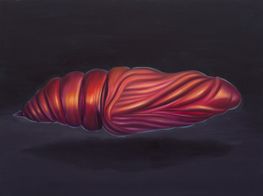Borderline: A Report from the 19th Contemporary Art Festival Sesc_Videobrasil
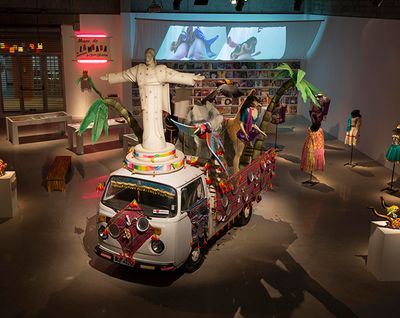
Southern Panoramas exhibition, part of the 19th Contemporary Art Festival Sesc Videobrasil at Galpão VB. Photo: Everton Ballardin.
'What's the 'Global South' anyway?' asked one of the 62 artists taking part in the 19th Contemporary Art Festival Sesc_Videobrasil to another. 'I don't know,' the other responded: 'Is it about everything but the West!?' It's never clear these days. As Videobrasil's curatorial statement notes, the 'geopolitical Global South'—a region comprising of 'Latin America, the Caribbean, Africa, the Middle East, Oceania and some countries in Europe and Asia'—has undergone 'significant geopolitical changes' that are 'radically redefining the notions of North and South.'
Curated by Bernardo José de Souza, Bitu Cassundé, João Laia and Júlia Rebouças under the supervision of chief curator Solange Farkas, (who founded Videobrasil in 1983, at the tail-end of a military dictatorship), the 19th edition of Videobrasil has shifted all its programming towards the theme 'Southern Panoramas,'; In other words, the Global South and its social fabric—its diasporas, hybrid identities, and migration flows. With a central exhibition organised through an open call, the 19th Videobrasil's broad-ranging perspective is embodied in three exhibitions: the main show and the guest artist exhibition at SESC Pompéia, and a presentation of four commissioned projects at Galpão VB, Videobrasil's new permanent venue. (Not to mention film programmes, performances, an awards ceremony, public programmes and publication launches.)
With the inauguration of its permanent space, this is momentous year for Videobrasil: a turning point that marks a broadening of the festival's Southern perspective. The inclusion of a Portuguese filmmaker, Gabriel Abrantes, as one of five guest artists, was posited during the press conference by Farkas as a nod to one of the inescapable contradictions of globalisation: post-colonialisms and neo-colonialisms. Though Portuguese, and thus viewed as the traditional colonising force in Brazil's history, Abrantes presents a short film of another process of colonisation in Liberdade: a love story between the daughter of a Chinese settler and an Angolese boy in Angola. The complications of imperial histories (and tendancies) is also tackled amongst the four commissioned projects at the Galpão VB.
In one sweep, the central exhibition offers a multitude of perspectives, not in parallel but in fluid relation.
In the case of Carlos Monroy, Brazil becomes not the post-colonial entity, but an imperial force via an installation on the history of Lambada: Llorando se foi. Lambada's Museum. In Memoriam of Francisco "Chico" Oliveira. The point of the installation is to show how culture can travel through appropriation, whether consensual or not. Monroy demonstrates the Lambada's connection to labour immigration from Bolivia to São Paulo in the late 1980s. The song Llorando se fue[Chorando se foi], written by the Bolivian group Los Kjarkas, was essentially plagiarised: 'remixed in Europe by one Chico de Oliveira, and released in Brazil by the band Kaoma,' Monroy states. Here, the Lambada becomes a global production: a cultural phenomenon that is as hybrid and contested as the region out of which it emerged.
The project locates the viewer neither North nor South nor in-between; but in a process of historical development and relation, in which identities, from political to cultural, are established, often re-written, and maintained. This condition was also articulated in commissioned artist Keli-Safia Maksud's sculptural installation Mitumba (2015), which consists of a large cube made of Dutch wax fabrics—often regarded as traditional African prints—hanging over a small pond. A solution of bleach will drip over the materials for the duration of the exhibition: an expression of cleansing as an act of decolonisation, which acknowledges the fact that the fabrics will probably never be white again, but will become something else altogether.
This is the thing about history and identity, particularly in the so-called Global South: Nothing is ever straightforward. Take Köken Ergun's two-channel video installation_Bayrak (The Flag)_ (2006). The work, which documents the joint festival of Children's Day and the establishment of the Turkish Parliament, is a study of the nightmarish potency of optimism and nationalism as a political force. Regionalism, too, can be co-opted in similar ways. Meanwhile, Slinko's contribution to the film programme, Ghost Looking For Its Spirit (2012), a woman carts around the beard of Karl Marx in the United States, contemplating the legacy he has had not only on the rise and fall of the Soviet Union, but on her —and thus our—understanding of self.
Here, the personal is political as much as it is historical: something Roy Dib articulated succinctly in video installation, A Spectacle of Privacy (2014), which mirrors the situation between Israel and Palestine through the relationship between two lovers. (The condom becomes the metaphor for the barriers between two states).
In the grand prize winning video Talk About Body (2013) by Hui Tao, the artist describes his body as a sum of historical inheritances dressed in the garb of a Muslim woman. The point is, quoting the artist, 'to discuss the coexistence of different times and cultures' in the body, taking into account the urban environment, rural life, and tradition and progress, 'that expire and reinvent themselves.' That is, identity is at once shared and different, but always somehow both intimate and political.
That reinvention and embodiment, as core themes, were expressed so comprehensively in the 19th Videobrasil's vast programme is a testament to the festival's sustained and rigorous investigation into what exactly unites the Global South, while considering how the term itself is shifting.
That the curatorial of the central exhibition in SESC Pompéia consciously took its cue from the work of its Italian-born, Brazilian architect Lina Bo Bardi is telling in this regard. A former 1920s drum factory re-launched in the early eighties as the Pompéia Factory Leisure Centre, showcases Bo Bardi's adeptness at grounding social imaginaries through spatial configuration. The building offers an interesting utopian proposal. The collection of warehouses, complete with communal canteen, exhibition spaces and a theatre-slash-cinema, is said to have been partly inspired by the rivers of the north: the storm drains are paved in pebbles.
Brazil becomes not the post-colonial entity, but an imperial force via an installation on the history of Lambada...
This consciously designed social space informed the way works were selected and positioned in the planning of this edition of Videobrasil, an exhibition that operates as an open, global platform. For instance, in the central show, the walls that once divided the space in previous editions were done away with so that works were allowed to speak with one another. One standout grouping includes the works positioned by the central exhibition area's internal stream of water, which meanders down one half of the converted industrial space.
Over this stream hangs Taus Makhacheva's Gamsutl, flanked by other works such as Ana Vaz's A Idade da Pedra (2013), a video that considers 'the natural interdependence of things: animals, celestial bodies, plants, humans, and rocky formations all belong in the same order,' and Mihai Grecu's visually impressive The Reflection of Power (2014), a video rendering of Pyongyang drowned by the seas. In one sweep, the central exhibition offers a multitude of perspectives, not in parallel but in fluid relation.
Of course, a fluid connection should not imply a soft or smooth course. There is a certain unease in the geopolitical perspectives of the Global South. In the central exhibition, South African Bianca Baldi presents a meticulous film of unpacking with her work Zero Latitude (2014), which focuses on The Louis Vuitton Explorator, a portable bed commissioned by Pierre Savorgnan de Brazza for his expedition to Congo.
Returning to the theme of colonialisms and neo-colonialisms, the film is an ambiguous thing: a beautiful study of a historical portable design steeped in war and occupation: Louis Vuitton as both culpable, permissible, and present.
This is the thing about the South—it is no stranger to what it feels like to be on the 'other' side of imperialism's Machiavellian power plays, and the result is contradictory. Even within the region in question—the so-called South—there are invisible and visible borders that cut lines between people and things.
In the central exhibition, Aline X and Gustavo Jardim's Tocaia (2014) abstracted this tension beautifully in a video installation showing a dramatic pastoral landscape bathed in a tragic Picasso-blue in which a herd of goats gaze at the camera lens. The animals are caught in an ominous loop of retreat and return in the work: running away like a murmuration every time a threat is perceived, and creeping back to continue the stand off only moments later.
The video deals with a heady mix of fear and curiosity towards the unknown—the feeling of standing on an edge, or a boundary. It is a metaphor for a flight or fly encounter in which power becomes an invisible line that at once attracts and repels: a populated boundary that is suspended but never still, much like the definition of the 'geopolitical Global South' itself.

